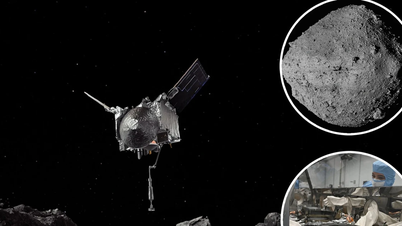A newly discovered object, possibly a "cousin" of Pluto, appears to be orbiting the far edge of the Solar System.
According to a study recently submitted to arXiv.org on May 21, the object named 2017 OF201 - a dwarf planet candidate - is moving in a super-wide elliptical orbit, with the Sun lying completely to one side.
The object's path is different from other large distant celestial bodies and could challenge theories about the existence of an undiscovered giant planet in the Solar System.
For about a decade, scientists have been searching for a planet beyond Pluto, which was reclassified as a dwarf planet in 2006. The gravitational pull of this unknown giant planet — often called Planet Nine or Planet X — could explain why so many distant objects orbit in seemingly the same direction.
“The orbits should be randomly oriented,” said astronomer Chad Trujillo of Northern Arizona University, who was not involved in the study. “So why are they tilted to one side?”
In their search for Planet Nine, astrophysicist Sihao Cheng of the Institute for Advanced Study in Princeton, New Jersey, and his colleagues combed through publicly available data from multiple telescopes. Instead of finding an actual planet, the team found 2017 OF201 in 19 images taken between 2011 and 2018.
Based on the position and speed of movement recorded over many years, researchers determined that this object has a very wide orbit: the farthest point is about 245 billion km from the Sun (more than 1,600 times the distance between Earth and the Sun), the closest point is about 7 billion km (45 times the distance between Earth and the Sun). One rotation around the Sun lasts more than 24,000 years.
The team estimates that 2017 OF201 has a diameter of about 700 km and a mass similar to Earth's Moon.
That size is large enough that its own gravity would cause the surface to become rounded—a criterion for being classified as a dwarf planet, Cheng said. However, scientists are still gathering more data to confirm this estimate.
However, 2017 OF201's orbit is not consistent with the orbits that have been cited to support Planet Nine's existence. “Its orientation is probably 90 degrees off from the cluster,” Cheng said.
Recent simulations of a Planet Nine orbit show that the path of 2017 OF201 does not fit the hypothesis. However, this finding does not completely disprove the possibility of the mysterious planet's existence.
According to Trujillo, “many hypothetical orbits for Planet X have been proposed. If this object does not fit into a certain model, then nothing can be concluded.”
Cheng agrees and says he is continuing simulations to test whether 2017 OF201's orbit is stable and to see if its orbit is affected by undiscovered planetary paths./.
Source: https://www.vietnamplus.vn/phat-hien-ho-hang-cua-sao-diem-vuong-o-ria-he-mat-troi-post1042933.vnp






![[Photo] General Secretary To Lam receives the Director of the Academy of Public Administration and National Economy under the President of the Russian Federation](/_next/image?url=https%3A%2F%2Fvphoto.vietnam.vn%2Fthumb%2F1200x675%2Fvietnam%2Fresource%2FIMAGE%2F2025%2F12%2F08%2F1765200203892_a1-bnd-0933-4198-jpg.webp&w=3840&q=75)


































































































Comment (0)